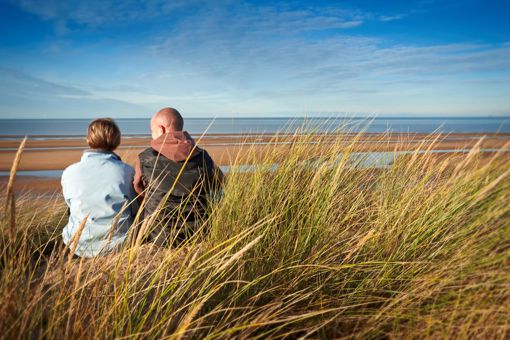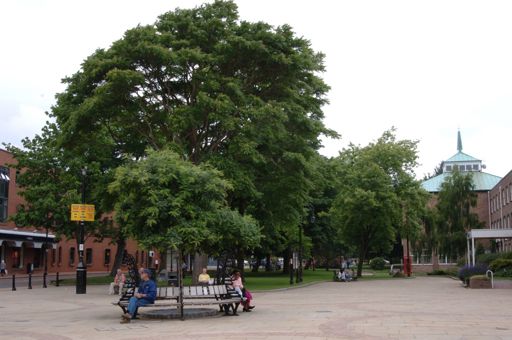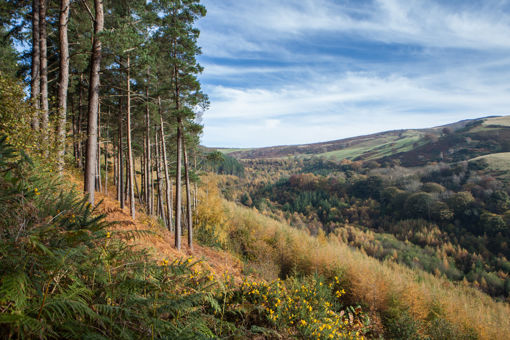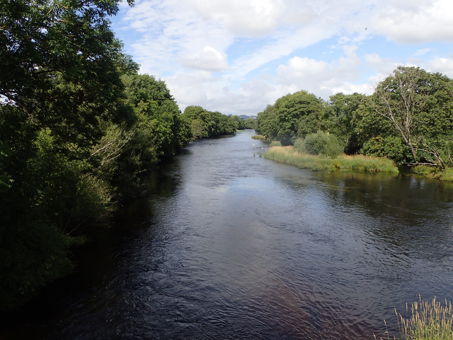Climate emergency: resilience and adaptation

Why this theme?

Climate change is one of, if not the, defining issues of our time. From shifting weather patterns that threaten food production to rising sea levels and the prospect of catastrophic flooding, the impact of climate change is global in scope and, therefore, unprecedented in scale. Drastic action needs to be taken right now. Trying to adapt in the future will not only be more difficult and costly, but also potentially too late.
Adapting to the impact of climate change requires action across all levels of society. Here in North East Wales, organisations and individuals need to alter their behaviour not just to reduce the negative effects of climate change, but also to increase our resilience to its consequences.



By acting locally, we must ensure that:
- Our communities are inclusive, empowered, resilient and safe in the face of the changing climate
- People who are most vulnerable are able to adapt
- Our inclusive and sustainable economy is flexible, adaptable and responsive to a changing climate
- Our society’s supporting systems are resilient to climate change
- Our natural environment is valued, enjoyed, protected and enhanced, with increased resilience to climate change
It’s worth reemphasising that this theme represents the cornerstone of the North East Wales Area Statement, cutting across four other themes in terms of aiming to deliver wider outcomes and, in turn, helping communities mitigate and adapt to the impacts of climate change. For instance, increasing woodland cover next to a community not only enhances biodiversity, social health and well-being, but also enables trees to act as ‘carbon sinks’, soaking up excess water and reducing what’s known as the ‘urban heat island effect’, something that occurs when an urban area becomes significantly warmer than surrounding areas due to human activity. Amazing as it sounds, but an 80-foot beech tree has been shown to absorb the daily carbon dioxide output of two family homes.
Perhaps unsurprisingly, the current climate emergency featured prominently at our Area Statement engagement events. In particular, stakeholders made it clear they were concerned about flooding and coastal erosion. Managing the existing and future risk is key along the North Wales coastline, together with the Dee and Clwyd catchments. The concept of nature-based flood mitigation extends across the whole Area Statement.
It should be noted that questions were asked about whether the Area Statements process was taking the climate emergency seriously enough. Indeed, both Wrexham County Borough Council and Flintshire County Council suggested that the climate emergency should play a central role not just as a seperate theme, but one which underpins the other four in terms of delivering resilience and adaptation.
Looking ahead, we need to continue talking more about climate change if we are to build a greater understanding of the local issues. Together with the North Wales regional approach to climate change, we want to have a conversation that people can relate to. It needs to be a new kind of conversation, one that involves as many people as possible and adds a community perspective to the climate emergency debate. By making small changes at a local level, we can help solve a major problem that requires action both nationally and internationally.

What would success look like?
The sheer scale of the current climate emergency can appear overwhelming, something that was reflected at our engagement events. People want to talk about opportunities but seem daunted about exactly where to start. That explains why further discussion is required in order to pursue those opportunities. Nevertheless, it was agreed in the engagement that the Area Statement should ensure that:
- There’s a greater understanding of the issue locally, and its impacts on North East Wales
- Our communities are inclusive, empowered, resilient and safe in response to the changing climate
- North East Wales moves towards a low carbon society
- Our most vulnerable communities respond and adapt to the climate emergency
- The North East Wales economy becomes inclusive, sustainable, flexible, adaptable and responsive to the changing climate
- The North East Wales natural environment is valued, enjoyed, protected and enhanced, with increased resilience to climate change
- The North East Wales coastal and marine environment is valued, enjoyed, protected and enhanced, with increased resilience to climate change
- Inappropriate development in high flood risk areas will be prevented
- A joined-up approach is encouraged across the three local authorities, maximising opportunities and avoiding duplication (for example, regarding land use planning policy)
In addition, engagement agreed that the Area Statement will pursue a range of opportunities including:
a) Natural Resources Wales will work with Public Service Board partners to research and propose an 'ideal structure' for managing a regional approach to climate change across all of North Wales.
b) As a result of climate change, North East Wales can expect to see more intense rainfall and, therefore, more flooding. That means Natural Resources Wales and our partners need to improve our common understanding of flood risk management and communication, prepare and build resilience, prioritise investment to the most at-risk communities, prevent more people becoming exposed to risk, and provide an effective and sustained response to events. The 2018 Preliminary Flood Risk Assessment has identified places in North East Wales at significant risk of flooding. The national flood risk assessment in Wales community at risk register provides an evidence-based tool for us, and other risk management authorities, to deliver a risk-based approach to flood risk management.
c) Natural Resources Wales will lead by example in demonstrating how the public and private sectors can reduce their carbon impact through sharing the NRW’s Carbon Positive Project.
d) Encouraging the Welsh Government to consider how links between offshore windfarms and communities can be improved, for example by potentially developing an offshore windfarm community benefits scheme similar to windfarms on land.
e) Influencing Local Development Plans and Community Infrastructure Levy (CIL), so that they contain positive policies surrounding renewable energy (where appropriate) and other opportunities, for instance new housing developments with renewable district heating schemes, and new agricultural/industrial developments having a renewable energy source. So far, only a small number of local planning authorities in Wales have introduced the levy.
f) Improving public transport and the electrification of public infrastructure. Travel in Wales is currently dominated by the private car. That has to change. The transition to a low carbon public transport system, one that is accessible to all and contributes to liveable, sustainable communities, could have significant public health and environmental benefits.
g) Driver and Vehicle Licensing Agency (DVLA) figures show that there were over 31 million cars in the UK at the end of 2015. The average car produces over two tonnes of CO2 each year. With that in mind, the promotion of car sharing and car club schemes can only help reduce the number of vehicles on our roads.
h) More lower traffic speed limits to reduce greenhouse gas emissions and improve air quality at traffic hotspots.
i) Promoting electric car use and availability of charging points. Most of us agree that a shift away from diesel and petrol cars is inevitable. In North East Wales, we need to focus on the implications that will have for our infrastructure, ranging from availability of charging points to generating enough electricity.
j) Supporting business, companies and organisations in setting goals to send zero waste to landfill, along with finding value by making better use of resources that have direct cost savings and encourage a ‘circular’ economy.
k) The development of a regional carbon credit/offsetting scheme that benefits local communities providing employment, health, well-being and social benefits, while also pursuing ‘green infrastructure’ opportunities to help reduce, mitigate and adapt to the challenges of a changing climate.
l) Linking the health and well-being agendas with the climate emergency. Biodiversity loss, pollution and the climate emergency aren’t just inconveniences. They are the biggest public heath threats our communities have ever faced. When communities have access to green space, health and well-being tends to be improved.
m) The development of community renewable energy schemes (where appropriate) similar to solar panels that have been placed on council houses in Wrexham, enabling revenue to be raised that can fund further carbon positive projects.
n) Encouraging people to embark on a short field-to-fork journey by buying local. Supporting local farms and businesses in connecting with their regional markets reduces food miles and packaging, while also benefitting the local workforce and land management.
o) The creation of a Story Map public engagement tool to document our progress, evidence, and success against the theme, aimed at effecting change, influencing opinion and raising awareness. The maps will be designed for any audience with access to the internet.

Who have we worked with to date?
In total, 148 people representing 68 organisations across 28 different sectors (with wide-ranging remits) attended five engagement events staged by Natural Resources Wales over the course of 2019. All but one took place at local community venues, the exception being the larger, civic setting of Denbigh Town Hall in July. We also engaged with senior management and portfolio leads of all three local authorities in North East Wales.
Dafydd Thomas, an external well-being consultant, was present at each event which featured an innovative procedure called ‘meeting sphere’ designed to encourage participants to share their true feelings, prioritise what really mattered to them, and work together to get results.
The climate emergency theme was well supported by many of our stakeholders including local authorities, representatives from the agricultural sector, industry, forestry, flood partnerships and conservation. Invites were sent to other organisations who, sadly, were unable to attend.
Despite many sectors being well represented, Natural Resources Wales is aware that we need to broaden the appeal of Area Statements beyond those who we routinely engage with. We would like communities and the non-environmental sector to be involved (up until now, non-environmental sector participants accounted for only 15% of those engaged). Working together with Flintshire County Council, invites were sent to approximately 2,500 small and medium-sized businesses, yet the response to date has been disappointing. We have, however, worked with the Young Wales organisation which ran a series of workshops across North East Wales that will contribute to the Area Statement and, in the process, engage and empower young people.
We have always recognised how important engaging with communities is, and we are in the process of considering how best to do that in order to make the most of the opportunities that have been discussed to date. Rest assured, Natural Resources Wales will be encouraging and supporting communities to come together to form groups that share common goals or purposes, helping them shape and deliver the Area Statement so that it benefits their localities.
What are the next steps?
Throughout 2020 we will continue to work with stakeholders as we start to deliver the opportunities identified through the Area Statement. We expect further opportunities to arise as the engagement process continues.
Actions for NRW and stakeholders include:
- Looking to broaden the appeal of the Area Statement process, encouraging organisations to understand that this is something they can shape, influence and engage with
- Keeping the Area Statement constantly under review, reflecting new ideas and evidence that comes to light, along with discussions which take place
- Continuing to map our stakeholder engagement carefully, reaching out to sectors and organisations we have not yet talked to
- Aiming to build a better understanding of what climate change means for North East Wales, and how it will impact us
- Supporting communities to come together and form groups that contribute to the Area Statement and its delivery and, in the process, getting more of a sense about whether the opportunities being identified are in fact the right ones
- Encouraging a diverse range of stakeholders to come together and form a ‘theme’ focus group to further develop the opportunities identified
- Encouraging new ways of working, new relationships to be formed, and continuing to build trust with our existing partners
- Incorporating feedback from the Youth Wales engagement sessions into the Area Statement
- Signposting partners and communities towards funding opportunities that support the delivery of the Area Statement, including Natural Resources Wales’ own grant funding programme
- Raising specific points and discussions around policy relating to Area Statements, in our role as principal adviser to the Welsh Government
- Improving our use of social media, while considering other innovative ways to involve people in the Area Statement process
 © Crown copyright (2019) Wales
© Crown copyright (2019) Wales
How does what we’ve proposed deliver Sustainable Management of Natural Resources (SMNR)?
The principles underpinning the Sustainable Management of Natural Resources (SMNR) are pivotal to the Area Statements process. At the heart of its development has been our collaborative engagement with a broad range of partners and stakeholders, both existing and new. We have tried to start conversations that matter, asking people to talk to people they don’t know, or would never normally speak to. By doing so, it became clear that many shared a similar vision of the future, one that ultimately laid the foundations for our five themes. While some of those conversations were challenging, they always proved worthwhile and productive.
This process has helped us collaboratively define the problem and gain an understanding of the opportunities and potential actions, prior to deciding what needs to be done to achieve our shared ‘vision’. This represents a significant change in how Natural Resources Wales works. In the past we may, on occasion, have gone ahead with our preferred options without engaging or seeking any kind of consensus. The challenge now is to work together with our partners, stakeholders and communities in moulding, and ultimately delivering, these opportunities.
The Area Statement will allow us all to make clear, evidence-based decisions, drawing not only on information that we hold but evidence our partners provide which is held locally. Much of the data will be made available to all through Natural Resources Wales’ new data portal. We appreciate that there are gaps in our evidence, but we’re working to plug them. We know we need to improve our understanding of the impact of climate change at a community level, and communicate that effectively.
Furthermore, we know that we need to protect our ecosystems and the services they provide by building resilience. There is a strong relationship between the climate and environment emergencies, our other four Area Statement themes, and the opportunity to deliver multiple benefits that interlink. All these themes are designed to make our ecosystem services more resilient, to mitigate against climate change, and to help our communities adapt to a changing climate. Again, some of the detail surrounding how best to take these opportunities forward have yet to be addressed. However, we know that many are scalable either by following the North East Wales path defined here, or by taking more of a regional approach in tandem with North West Wales.
How can people get involved?
In North East Wales, we envisage that people will be able to get involved in the debate surrounding the climate emergency through further engagement. Details will be announced as the Area Statements process evolves.
Should you wish to find out more, please don’t hesitate to complete the following form or email us at northeast.as@naturalresourceswales.gov.uk
Give us your feedback





